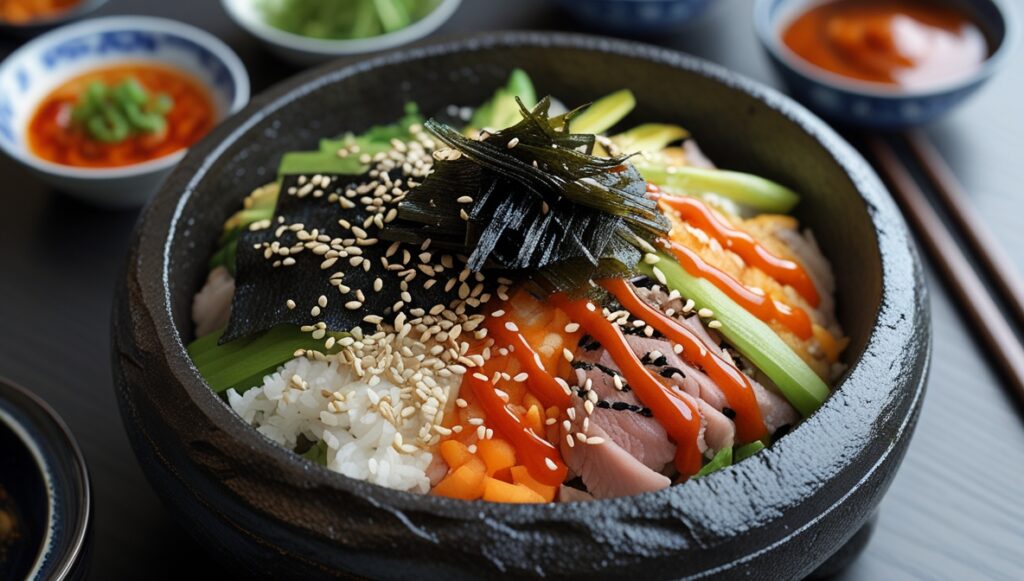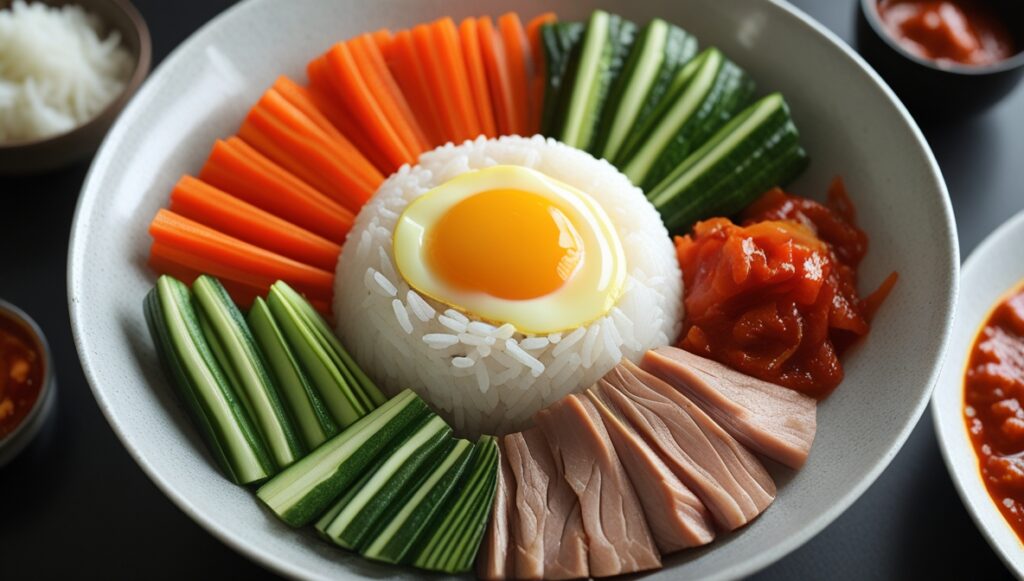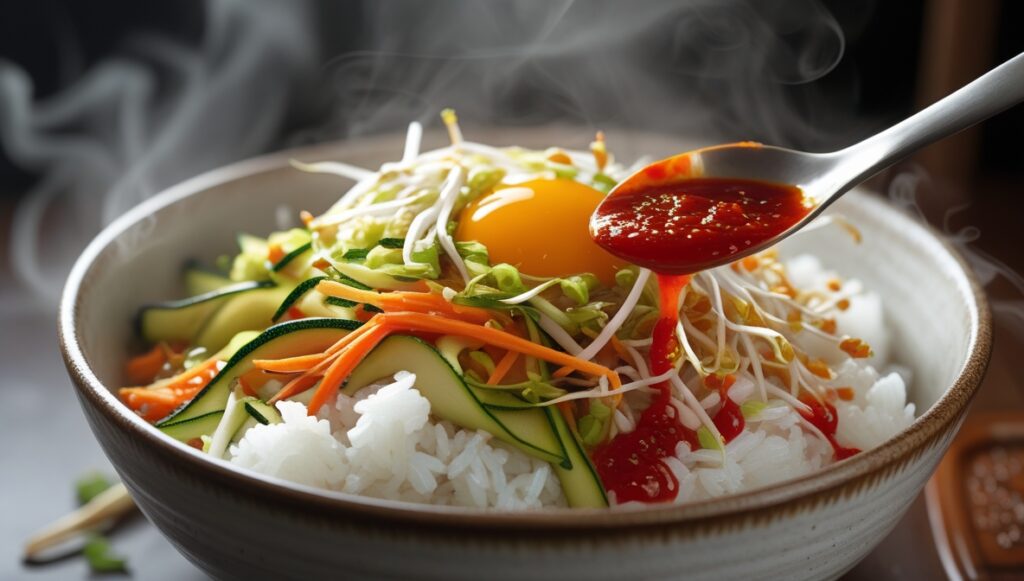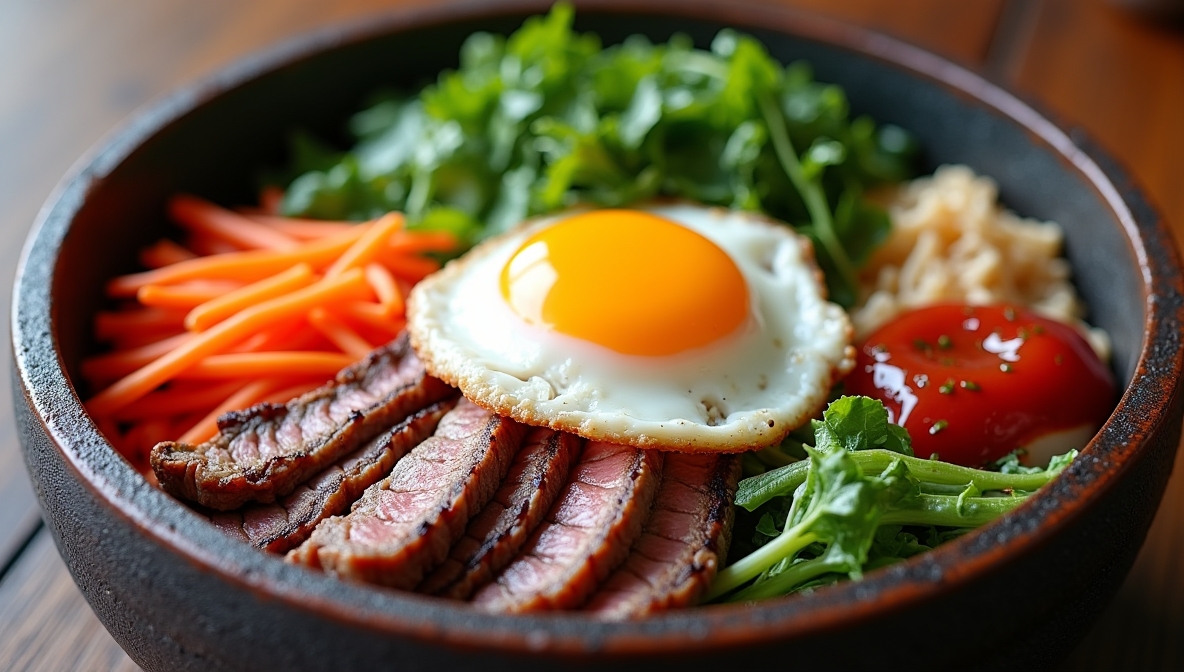Introduction
Among the famous foods in South Korea, one dish stands out not just for its taste but for its cultural richness—Bibimbap. Translating to “mixed rice,” this traditional South Korean food is a delightful blend of flavors, textures, and colors. Served warm with rice, sautéed vegetables, marinated meat or tofu, a sunny-side-up egg, and a generous dollop of gochujang (Korean chili paste), this bowl of harmony captures the philosophy of balance central to Korean cuisine.


History & Cultural Significance
The origins of this beloved dish stretch back centuries. In farming communities, it was once prepared to use up leftover banchan (side dishes) before the Lunar New Year, symbolizing a clean slate. In the royal courts, it was crafted meticulously with top-tier ingredients. Over time, it became a staple across the country, embodying Confucian values of unity and order.
As one of the most famous foods in South Korea, this dish continues to reflect the country’s commitment to culinary beauty and balance.
Core Ingredients & Regional Twists
Traditional South Korea food often showcases seasonal, locally sourced ingredients, and this dish is no exception. Typical elements include:
Steamed rice
Sautéed vegetables like carrots, spinach, bean sprouts, zucchini, and mushrooms
Gochujang (chili paste), soy sauce, and sesame oil
Bulgogi (marinated beef) or tofu
A fried egg
Regional styles vary:
Jeonju-style uses raw beef and yolk-only eggs.
Dolsot Bibimbap is served in a sizzling hot stone bowl that crisps the rice.
Yakcho versions add medicinal herbs for a healthful twist.
Modern variations now include vegan, gluten-free, keto-friendly, and poke-style adaptations, ensuring that there’s a version for nearly every dietary need.
Cooking Process & Difficulty Level

Creating the best Bibimbap recipe at home is easier than it looks. Though ingredient prep takes time, the dish itself is simple to assemble.
Cooking Steps:
Cook rice and keep it warm.
Prepare and sauté each vegetable separately for vibrant color and flavor.
Cook marinated beef or tofu.
Fry an egg sunny-side up.
Assemble: Start with rice, then artistically place each topping.
Add a spoon of gochujang and a drizzle of sesame oil.
Tip: Presentation matters—arrange toppings in a radial pattern to mimic a flower-like design.
Where to Eat Bibimbap in South Korea
Wondering Best Places to eat Bibimbap for an authentic taste? Here are top spots:
Gogung (Jeonju) – Famous for its original Jeonju version.
Jinju Hall (Seoul) – Offers Michelin-rated premium ingredients.
Gwangjang Market (Seoul) – Try the street food version on a budget.
Insadong Traditional Restaurants – Perfect for those wanting to enjoy this dish in a historic, cultural setting.
Each of these places provides a unique take, showing the diversity of traditional South Korea food.
Perfect Pairings
This dish pairs well with:
Drinks:
Boricha (roasted barley tea)
Makgeolli (milky rice wine)
Light Korean beer
Side dishes:
Kimchi
Pickled radish
Sigeumchi-namul (seasoned spinach)
Seaweed salad
These enhance the meal’s flavor profile and texture variety.
Fun Facts & Trivia
K-pop fans might know that BTS’s Jungkook has named this dish among his favorites.
NASA once added it to the space menu for astronauts.
In 2011, a 14-ton version was made to celebrate and promote Korean cuisine.
Health & Nutrition
It’s a meal packed with nutrition:
High fiber from veggies
Lean protein from beef or tofu
Healthy fats from sesame oil
With easy substitutions, you can make it vegan (omit egg and meat), gluten-free (use tamari), or keto (swap rice for cauliflower rice).
Best Bibimbap Recipe (Simple Version)
Ingredients:
2 cups cooked rice
1 cup mixed vegetables
½ cup marinated beef or tofu
1 egg
1 tbsp gochujang
Sesame oil & sesame seeds
Method:
Cook rice.
Stir-fry or blanch vegetables.
Sauté meat/tofu.
Fry egg separately.
Layer ingredients in a bowl over rice.
Add gochujang and sesame oil.
Mix well before eating.
Tip: Add kimchi for an extra punch of flavor.
Global Influence
As part of the global rise in Korean cuisine, Bibimbap has inspired fusion dishes:
Bibimbap burritos (USA)
Sushi rolls with Bibimbap ingredients (Japan)
Plant-based bowls in Western vegan cafés
It’s now a regular feature on international menus, with each chef giving it a local twist while retaining its Korean soul.
Comparisons with Similar Dishes
Tacos: Focus on hand-held portions versus the communal mixing of Bibimbap.
Shawarma: More meat-heavy and saucy.
Buddha Bowls: Health-focused but lack the cultural depth of traditional South Korea food.

